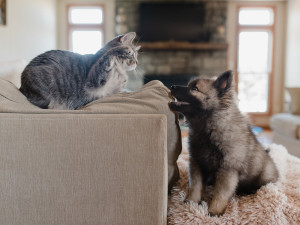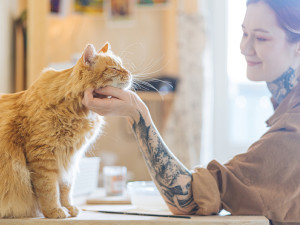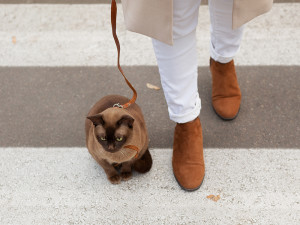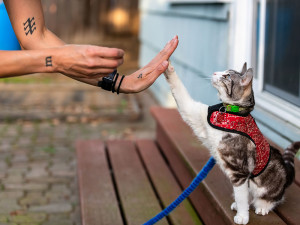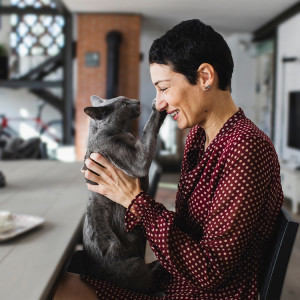Kittens Are Smarter Than Puppies, Study Says—And Really Good at Math
They aren’t exactly CPAs, but they can probably tell you which piggy bank has more coins in it.
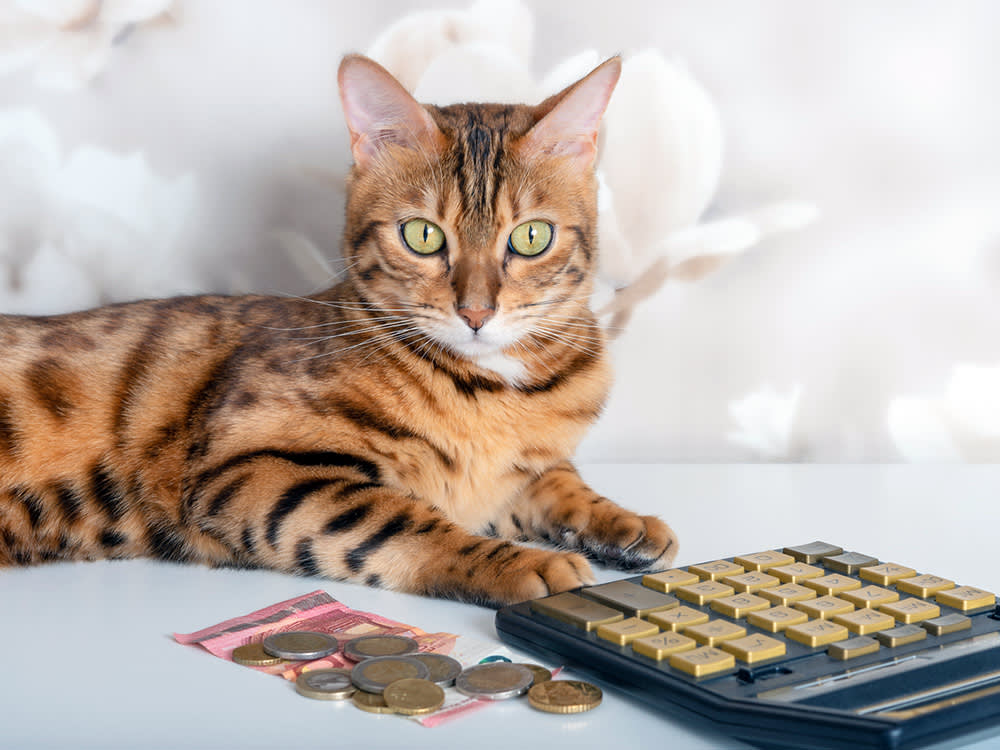
share article

Your pet wants you to read our newsletter. (Then give them a treat.)
Your cat may not be able to help you get your finances in order or explain any statistical theories, but they are not totally clueless when it comes to math, either. In fact, they are capable of quantity discrimination, which basically means they can tell different quantities apart. That makes sense for many animals because they naturally need to choose between less and more: more food is good, fewer predators is good.
Their success rate depends on the proportions of the items being compared. It’s easier for them to tell apart a single item from 10 items than to tell a collection of eight items from 10 items. Incidentally, the same is true for people, as well as other animals who have been studied. But, let’s get back to cats — their cuteness and math skills are of greater interest to me than ours right now.
How do we know cats can do math?
We know cats can distinguish different quantitiesopens in a new tab, but a May 2023 study opens in a new tabinvestigated the developmental aspect of this skill by asking if seven-week-old kittens have it already. The answer, based on two experiments, is yes, even young kittens are capable of rudimentary math tasks. Again, not enough to help with your taxes or your homework, but impressive none the less.
In the first experiment, 26 kittens were given a choice between two trays with pieces of food on them. The food amounts ranged from three versus four pieces to one versus nine pieces. Each of the kittens was tested 12 times with different ratios of food each time. Of these kittens, 25 picked the bigger quantity more often than chance guessing would predict, and the 26th kitten did not.
There was no difference in performance between male and female kittens. When the ratio of the two quantities was less than 0.4, the cats reliably chose the larger number of food items. When the ratio was less, their choices were more variable.
Some kittens were eliminated from the study because they either showed no interest in the food, or they always chose the tray on the left (or right) side no matter how much food was in either location. I only mention this to emphasize how much patience and thoughtful care is necessary with research on behavior, especially with cats, to make sure the data are truly informative and not simply because of an individual’s particular quirks that have nothing to do with the choice being measured.
In the second experiment, there were 24 kittens, and each was presented with a choice between a large piece of food and a small piece of food. Food was shaped into flat circles using molds. The ratio between the sizes of the pair of food items being tested ranged from 0.2 to 0.8.
Eighteen of the kittens chose the larger piece of food more often than the smaller piece, five kittens chose the smaller piece more often, and one chose the smaller and larger pieces equally as often. Kittens only consistently chose the larger amount when the ratio of the area of the two food items was below 0.5. Again, there was no difference between the choices made by female versus male kittens.
Kittens are the superior mathematicians over puppies.
Math’s a funny thing, because there are so many ways to look at it. In the situation presented by experimenters to test if these kittens did math, only the ratio of the different amount or the ratio of the size of the food predicted their choices.
Neither numerical difference nor total number was influential in guiding kittens’ choices. Interestingly, when the size of one food item was five times larger than the other food item, kittens tended to choose the smaller item. This preference is seen in adult cats as well, perhaps because of a general preference for non-threatening prey items.
I don’t like to risk starting a fight, but in the constant battle about whether cats or dogs are smarteropens in a new tab, kittens take a win over puppies in the math department. Though puppies are also capable of quantity discrimination, they are no match for kittens. For example, seven-week-old kittens can reliably choose the larger quantity when presented with a choice between one item and four items, but eight-week-old puppies can’t, per this 2020 studyopens in a new tab. Puppies can choose the larger quantity when the task is easier, like when the choice is between one and six or one and eight.
The difference between kittens and puppies suggests that even though adult cats and adult dogs are more similar in their ability to do basic math, the skill develops earlier in cats than in dogs. The difference may reflect the ancestral feline need to hunt on their own and make quantitative choices at an earlier age than the more social, group-living ancestors of dogs. Puppies rely on others longer into their developmentopens in a new tab than cats doopens in a new tab.
So, to sum it up, kitten’s math skills are impressive. Of all the things a kitten can excel at, like jumping highopens in a new tab, attacking toysopens in a new tab, and hiding successfullyopens in a new tab in even a small home, being a math prodigy is the most surprising.

Karen B. London, PhD, CAAB, CPDT-KA
Karen B. London, Ph.D., is a Certified Applied Animal Behaviorist and Certified Professional Dog Trainer who specializes in working with dogs with serious behavioral issues, including aggression, and has also trained other animals including cats, birds, snakes, and insects. She writes the animal column for the Arizona Daily Sun and is an Adjunct Professor in the Department of Biological Sciences at Northern Arizona University. She is the author of six books about training and behavior, including her most recent, Treat Everyone Like a Dog: How a Dog Trainer’s World View Can Improve Your Lifeopens in a new tab.
Related articles
![A Burma breed cat on a leashed harness sitting near a feet of a girl at a pedestrian crossing.]() opens in a new tab
opens in a new tabHow to Walk Your Cat on a Leash
Adventure Cats author Laura Moss’s step-by-step guide for hitting the streets with your cat.
![Training a cat sitting with leash and harness on.]() opens in a new tab
opens in a new tabA Step by Step Guide on How to Clicker Train Your Cat
This popular training technique isn’t just for dogs. Here’s how you can use it for your cat.
- opens in a new tab
Dream of High-Fiving Your Cat? Here’s How to Teach a Cat Tricks
It takes some patience (shocker), but it can be done.
![cat playing fetch]() opens in a new tab
opens in a new tabHow to Train a Cat
Move over, pups. This is a cat’s game, too.
![Three cat puzzles on a colorful pink, burgundy, and green color-block background]() opens in a new tab
opens in a new tabThe Best Puzzles to Unleash Your Cat’s Inner Einstein
Genius takes many forms. Could your cat be one?
![Short haired woman holding a gray cat that's playfully pawing at her nose]() opens in a new tab
opens in a new tabDoes Your Cat’s Fur Pattern Determine Their Personality?
It’s a little more complicated than that.
